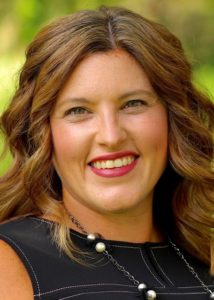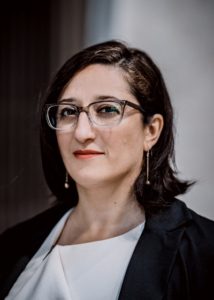We're here to help you maximize your potential and achieve your definition of success.

Sales Tips and Best Practices
with Amy Stiner, Tory Garber, and Irina McGrath
After having some great conversations about sales on my Elite Achievement podcast, I decided to end the series with a final episode that included reaching out to three successful financial advisors who collectively have over twenty years of experience in sales. I asked each of them to answer the following three questions:
- What are your best outreach tips for getting a sales meeting?
- Once in a meeting, what are your favorite questions to ask to create connections?
- How do you follow up with people who don’t become clients right away?
Sales with Amy Stiner

Below are some great tips these experts shared in a call, beginning with Amy Stiner out of Leawood, Kansas.
“My best outreach tip for getting the meeting scheduled is to follow up in three ways,” shares Amy. “First, I send an email introducing myself. I let them know in the email that I am going to reach out via phone to schedule a meeting, which I do if they don’t respond to the email in a few days. If I don’t connect with them via phone, I text them to follow up on my email and voicemail.”
“Once I’m in that meeting, my favorite questions to create connections are open-ended,” Amy continues. “I may ask them to tell me what’s new in their life, what made them interested in scheduling some time, and what concerns they may have from a financial perspective. I also always want to ask about family, how they got into their career, and their educational background. Those questions help me identify commonalities we may share. If they don’t become clients right away after I take them through the sales process, I send a follow-up check-in email, usually three to six months after our initial meeting. Or I may even try to establish a set follow-up call with them if we decide that it isn’t the right time, but that things have a way of changing. If six months later, I’m still not able to connect with them, I’ll typically follow up in another month, and I make sure they’re on my marketing campaigns so they receive valuable information and see my name regularly. I also reach out a year after our initial meeting to see if it is a better time. I don’t take them off my call or email list until they ask me to. I have had a few potential clients that circled back with me in that first year or two, and we went through the sales process together.”
I love how Amy shared that she doesn’t remove someone from follow-up until they tell her to. Sometimes, we give up too soon because of our own discomfort during outreach, and Amy reminds us that often, timing plays such an important role in sales.
Sales with Tory Garber

Next, Tory Garber, out of Las Vegas, Nevada shares her tips for outreach, favorite questions for connection, and what to do when people don’t become clients right away.
“I call prospects and clients between five and six P.M. because it’s typically the period between the end of the workday and the beginning of a family routine, so it is the best time to reach people,” says Tory. “Another outreach tip is to know how to overcome objections. Often, there is simply a misunderstanding or miscommunication to clear up. For example, if someone tells me they’re already working with a financial advisor, I can share that I’m not looking to replace them but rather to fill any gaps and enhance what they’re already doing. If there is a nominator that introduced you, refer back to that person because the goodwill they feel towards them might lead them to schedule a meeting.”
Tory continues by sharing a few of her favorite questions to build connection, including those listed below:
- How do you like to spend your time when you’re not working?
- Are there any groups that you belong to?
- Do you enjoy traveling?
- Are there any charitable organizations that you volunteer for or donate to?
When a prospect doesn’t become a client, Tory, or her associate, will reach out on their six-month birthday (six months after initial contact) to schedule a meeting. Prospects also receive a digital birthday card and monthly newsletters geared towards their demographic to keep Tory and her team in mind. Tory connects directly with prospects on LinkedIn, so they’ll see industry-related content and personal updates there if they accept the request. “I also go back to the nominator during annual reviews to give them feedback on which referrals became clients and which didn’t,” says Tory. This often prompts the referrer to return to the prospect and encourage them to schedule with Tory again.
I like how Tory reminded us that there is often a misunderstanding or miscommunication to clear up in sales conversations. Sometimes, we take objections too personally, which can derail our mindset and keep us from consistently reaching out.
Sales with Irina McGrath

Next, Irina McGrath, out of Englewood, Colorado, shares her outreach tips for getting a meeting.
“The number one thing I’ve discovered is to share my vision with clients, such as how many households we want to impact and the impact we want to make in the community,” says Irina. “We notice that our sharing automatically creates a level of lead generation where we don’t have to do very much; we just get introductions via email. The second element to that approach is also educating our clients that the best introduction is via email. Many clients know what to do and even share my calendar link so people can immediately schedule a time together. It’s taking the time to talk with clients and prospects about us, our practice, and some of our processes while keeping it very simple and easy for them to introduce us. We also utilize all of the technology, and LinkedIn has been a great resource for reaching out to people, connecting to new contacts, and noticing if we have any mutual connections with our clients. We use mutual connections to create a list of people we want to reach out to. I’ll ask our clients if we can use their names and mention that we work with them when we call the new prospect, and 100% of the time, it’s a yes. We have found that the phone is becoming less and less popular for scheduling meetings, so we utilize texting and LinkedIn messaging after leaving phone messages. If we have an email, we will use that as well. One of the best tips I have from working with Silicon Valley start-ups is to reach out a minimum of seven times before moving on and letting that prospect go.”
Irina uses questions that encompass the psychology of money, including the ones below:
- What is your relationship with money?
- What is the best financial decision you have made?
- What is the worst financial decision you have made?
- What brings you joy when you’re not working?
- What motivates you enough to change your behavior to create a better life for yourself and your family?
If a prospect doesn’t become a client right away, Irina follows up with emails every three months. “Everyone also gets an email towards the end of the year celebrating the year’s end and new year,” says Irina. “We ask them to reflect on the year, think about their goals, and ask them to meet with us to discuss their savings goals for the next year. I also call them every six months in addition to the emails every three months. It’s a well-oiled machine, and, of course, anyone can opt-out if they don’t want to hear from us in the future.”
I love Irina’s end-of-year email and how she reminds us to make it simple for clients to make introductions. It’s clear from Amy, Tory, and Irina that having a specific process for outreach and follow-up is so important, and it can help us eliminate the emotional decision-making that can come with sales.
I encourage you to check in with yourself and reflect on your process for outreach and follow-up. You will likely have follow-up opportunities from referrals and meetings earlier in the year, which can help you finish this year strong. You can also set practice management goals for outreach and follow-up processes for the new year.
As I listened to the insights from our three expert financial advisors, I was reminded that there is room for individuality as you establish your processes. They each shared various questions they rely on to build connections in meetings. So, think about your own favorite questions!
With that goal achievers, keep celebrating your weekly wins, noting your lessons learned, and identifying your priorities for next week so you can consistently pursue progress in the direction of your goals.